A diary of my Kerbal Space Program creations as Universal Aerospace Incorperated, Kerbin's top space agency. Complete with screenshots and blueprints.
Don't wanna be here? Send us removal request.
Text
thellamamongler said: @universalaerospace how did you recover the data? Did you have the satellite return to Kerbin, detach a science container for the return trip, or transmit the data wirelessly? The data was transmitted back, for a more advanced mission I’d recover it but the primary purpose of the craft was to give me a map of the surface to decide on a landing location.
Project: Mun Scan
Universal Aerospace is on their way to the Mun, we’ve designed a Mun lander and a miniature rover to be deployed on the surface, but first we need to scout out a good landing site!

We’ve already sent an unmanned probe to flyby the Mun so we don’t need much scientific equipment, we’re sending a probe equiped with SCANsat scanners and the stock survey scanner, as well as a couple of gravioli detectors because they provide science for every biome in high orbit.

Since the payload is very small, not much is required for the launch vehicle, we’ve got a 1m stage to reach orbit and add about 600 delta-v to our hohmann transfer to the Mun and a Space Y booster to get us out of the atmosphere (parachutes added for recovery of the booster).

After the transfer burn I set up a correction to change the inclination and closest approach of the Mun encounter so we can easily get into a polar orbit without an inclination change.

Here’s the satellite deployed once we entered the Mun’s sphere of influence.

To scan the mun we remained on a 90 degree inclination orbit at 337km to cover the most area for a few days.

When scanning was complete we changed the altitude of our orbit so we’d be able to get science high above the Mun and science in space close to the Mun about half of the time to ensure we had gravioli measurements in every biome at both low and high altitudes.

Now the mission is over, and we’ve sent back the science from the trip (over 2000!) we just have to use our data to pick a landing site with easy access to multiple biomes and we’ll see you next time!
38 notes
·
View notes
Text
Project: Mun Scan
Universal Aerospace is on their way to the Mun, we’ve designed a Mun lander and a miniature rover to be deployed on the surface, but first we need to scout out a good landing site!

We’ve already sent an unmanned probe to flyby the Mun so we don’t need much scientific equipment, we’re sending a probe equiped with SCANsat scanners and the stock survey scanner, as well as a couple of gravioli detectors because they provide science for every biome in high orbit.

Since the payload is very small, not much is required for the launch vehicle, we’ve got a 1m stage to reach orbit and add about 600 delta-v to our hohmann transfer to the Mun and a Space Y booster to get us out of the atmosphere (parachutes added for recovery of the booster).

After the transfer burn I set up a correction to change the inclination and closest approach of the Mun encounter so we can easily get into a polar orbit without an inclination change.

Here’s the satellite deployed once we entered the Mun’s sphere of influence.

To scan the mun we remained on a 90 degree inclination orbit at 337km to cover the most area for a few days.

When scanning was complete we changed the altitude of our orbit so we’d be able to get science high above the Mun and science in space close to the Mun about half of the time to ensure we had gravioli measurements in every biome at both low and high altitudes.

Now the mission is over, and we’ve sent back the science from the trip (over 2000!) we just have to use our data to pick a landing site with easy access to multiple biomes and we’ll see you next time!
38 notes
·
View notes
Text
StarMods: Part Angle Display Continued!


This is a simple plugin that allows you to surface attach parts at accurate angles, created by Padishar. @linuxgurugamer adopted it and rebuilt it for 1.3.1! #KSP
17 notes
·
View notes
Text
JoolTube: Yes, but can your SSTO do this?

youtube
With Jeb otherwise indisposed Val has been relishing her new role as chief test pilotess. Next out the stables is the Maelstrom; a medium SSTO that is rumoured to be able to make it to the Mun and back on a single tank. Well, there’s only one way to find out!
By Cupcake Landers
26 notes
·
View notes
Text
Meet the Blimp-O-Matic
I was pretty depressed yesterday so I decided to make a blimp in my career mode game. Here’s the incredibly fragile and incapable of landing Blimp-O-Matic V1.0
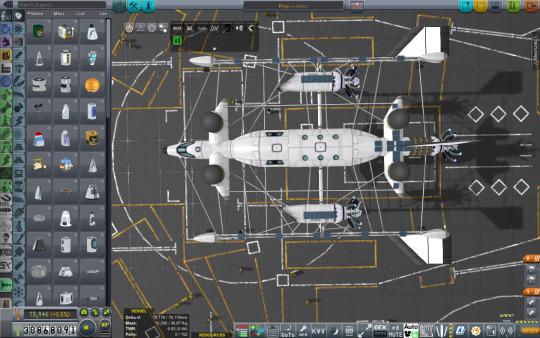
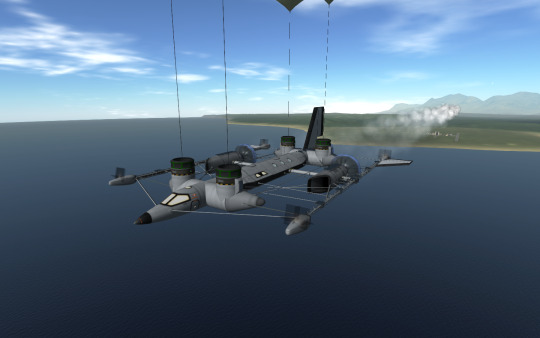
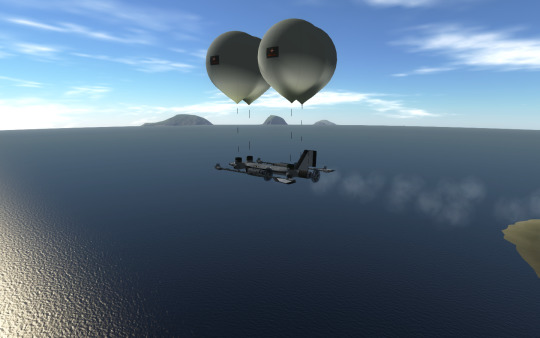
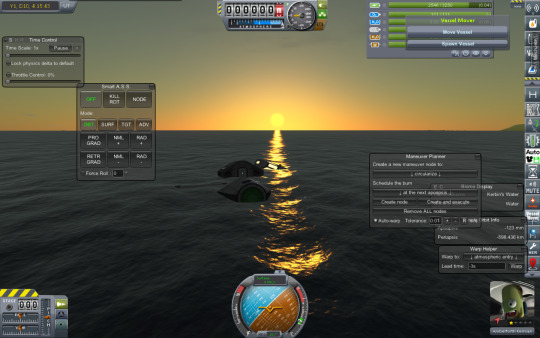
This ‘landing’ wasn’t even under the power of the parachutes, this was the result of using vessel mover to gently move the ship into the ocean for a demonstration of scatterer, but it wasn’t to be, the kraken struck and dissassembled the craft in seconds. Based on my observations, the version 2.0 was developed, with engines for powered descent (with balloons deployed), two more balloons, a payload bay with science equipment and better parachutes for unpowered descent.

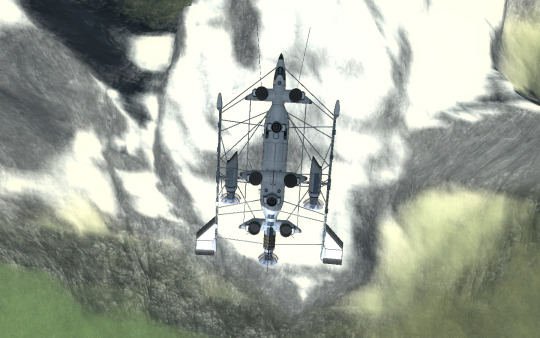
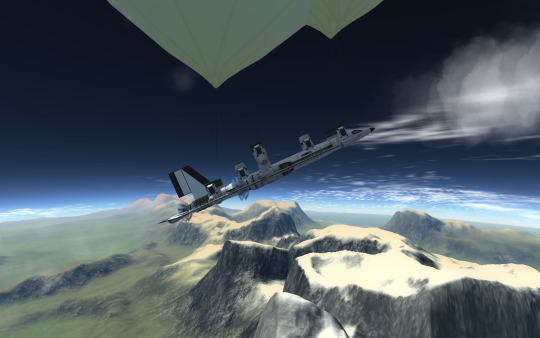


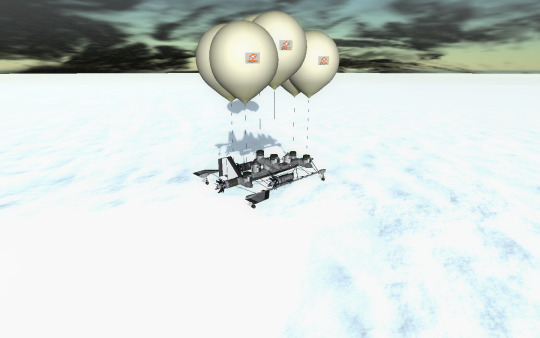




Here’s a top-down blueprint of the V2.0 with modded parts labeled.
1 note
·
View note
Photo











Some of the many KSP flags I made during my long abscence from the internet.
14 notes
·
View notes
Photo











Some of the many KSP flags I made during my long abscence from the internet.
14 notes
·
View notes
Text
Rebirth of Universal Aerospace Inc.
Brief Intro:
I neglected this blog for some time, since documenting a game like Kerbal Space Program is difficult and time consuming, but with the advent of KSP 1.1 I knew I wanted to start again, and this time do it better. I’ve been collecting mods and preparing to make this blog into a real narrative, and I’d like to begin with an origin story for the Kerbal Space Agency and its successor, the eponymous Universal Aerospace.

Exploring the Land and Scanning the Sky:
For a long time, Kerbal kind has been limited by their traditionally aquatic living habits, the ease construction and safety caused resistance to exploration of the terrestrial surface of Kerbin. While there were several enterprising Kerbals who set out to explore the deadly and beautiful world above, it wasn’t until the advent of astronomy that Kerbal kind really began to settle on the lands of Kerbin. From their cities below the oceans of Kerbin, Kerbals could not study the skies without considerable effort to construct towers or observatories on stilts, and thus the Kerbal Space Agency was formed, to study the stars and explain phenomena which had causes beyond the oceans of Kerbin, the tides were once believed to be caused by a great monster who would drink much of the ocean and regurgitate them when it had drunk too much. From deep in the seas the Mun appeared to Kerbal scholars as a second dimmer sun, rather than another world to be explored. Great leaps of science followed the exodus from the oceans, the invention of combustion power was a massive boost to productivity and a symbol of how exploration of terrestrial lands leads directly to progress. Before long advances in medicine from newly discovered plant species had vastly increased Kerbal life span and new bodies were being discovered, though their motion was extremely difficult to explain. For example: Kerbol, Mun and Minmus all traversed the sky in a single day, but not in precisely the same way, with Minmus’ path changing every 50 days (though due to its small size Minmus appeared more like a star than a moon in the night sky). The formation of an accurate planetary model took a very long time and much observation of the planets, moons and stars, hampered by the fact that Kerbals had no real concept of a year for much of their history, due to Kerbin’s lack of an axial tilt. With detailed observations of Eve, Duna, Jool, Mun and Minmus (other bodies in the Kerbol system were not discovered for some time) Kerbals had reached what was be considered a golden age of discovery. Laws of electrical, magnetic and physical science were being described for the first time, but this would soon end.
The Krakening:
Kerbal Science was not prepared for the events of the next 60 or so years, having barely scratched the surface of geological processes and astrophysics. The first hints that something was happening to Kerbin was widespread confusion among migratory animals, creatures which relied on the magnetic field of Kerbin for navigation. After much speculation and experimentation it was determined that Kerbin’s electromagnetic field was changing, though experts of the time did not know exactly what was happening, their data seemed to contradict other experimental results, it was clear that the magnitude and direction of the field was rapidly changing in ways that could not be predicted. Soon after this discovery volcanoes along the Evercrest fault line became extremely active in an unexpected simultaneous event called the Fault and Shake earthquake, leading to several enormous volcanic eruptions spewing soot and gas into the atmosphere. Over the next fifteen years Kerbal ecologists recorded an enormous extinction event that began with many previously mentioned migratory species, and quickly expanded to indigenous species of the Evercrest continent and then the whole planet. Fear of these changes caused widespread hysteria, especially among Kerbals inhabiting the new land settlements and more than 90% of Kerbals living on land opted to return to the familiar protective depths of the seas from whence they came. This was not the case with the few noble Kerbals who stayed behind to determine the causes of this calamity, including geologist Shelley Kerman and astronomer Marie Kerman who witnessed the final and most devastating blow to the ecology and biodiversity of Kerbin. Kerbal historians had previously noted vast increases in oceanic algal crop yield approximately every 100 days, coinciding with a drop in fish populations as the blooms temporarily choke other forms of life. With the new science of astronomy it had been noted that this period of growth coincided with a spot traveling across Kerbol, followed by a temporary increase of solar brightness. In the years leading up to the magnetic and Evercrest activity, the brightness of these flashes was recorded and it was recorded that with every occurrence the next was slightly brighter. It was at this time again, after the Evercrest event that Shelley Kerman created magnetic monitoring stations across Kerbin to create a map of the changes in magnetic field and seismic activity, and cross-referenced this with the more sporadic historical data to make an accurate model of the changes to Kerbin. Simultaneously Marie Kerman was preparing her newly constructed observatory to observe in high detail Kerbol during the next periodic algal bloom. Shelley Kerman discovered that the poles of Kerbin’s magnetic field had split into two north poles and two south poles, all close to the equator. The average strength of the field was only 60% of historical estimates. She suggested that the iron rich eastern Evercrest continental plate was being shifted by the new field shape to collide with the more electromagnetically neutral western Evercrest continental plate, thus causing the simultaneous seismological activity. Marie Kerman observed and for the first time described the transit of Moho across Kerbol, and the enormous solar flare that followed. For the first time in recorded history, Kerbin was dead center of a solar emission that carried trillions of high energy particles to the green and blue planet. With the magnetic field aligned as it was, the sky glowed bright green from dawn to dusk. Following this event, even more species on the lands of Kerbin died. The surface was changed forever. On land only a few species of tree, moss and insect remained, while in the oceans all plant life but the algae that had bloomed through history was wiped clean, starved of light by the virulent green plague across the water.

The failure of the Kerbal Space Agency to predict or explain the catastrophic events of the Krakening sparked political unrest that lasted for years, and the surface of Kerbin was deemed unsafe for just as long. Marie and Shelley Kerman were each awarded a Kerbel Prize but within the next ten years they both suffered from extreme radiation poisoning and died. Universal Aerospace:

In the years that followed, political pressure and public opinion forced the original Kerbal Space Agency to close its doors in favor of independent organizations like those spearheaded by the great Kerbals who, though too late to prevent much of the disaster, sacrificed their lives to allow Kerbal kind to understand how they happened.

In the face of rapid decentralization of scientific and economic services many new names have come into the spotlight. Magford J. Kerman (pictured above) started out with a small team of engineers and scientists, manning expeditions into the vastly changed surface landscape to document the new world that Kerbals must survive in and to repair and upgrade the various scientific outposts that had been abandoned on the surface. Now, he is CEO of Universal Aerospace, and has won several contracts from the Kerbin World-Firsts Record-Keeping Society. Now that the surface radiation levels have been declared ‘Safe Enough’ by the Kerbin Radioactivity Board public outcry is now more than ever demanding that Kerbals explore the universe, to learn and protect Kerbal Kind forever.

I will be documenting Universal Aerospace, my space program on this blog, hopefully with blueprints, summaries, screenshots and profiles of notable Kerbals. I’m not great at KSP, and I won’t be playing hardcore or completely legit. The idea is to make a narrative and build a world while having fun, not to be accurate or efficient or good at the game.
0 notes
Photo
Batteries on early stages make night launches less draining on the battery life of the probe, so if conditions are not favorable you still have more than enough juice for whatever maneuver you want, without increasing the mass of the final payload. Chutes on the lower stage are for a mod called Stage Recovery, which allows you to recover dropped stages if they are slow enough. Setting up your chutes so they fully deploy at near ground level pressures ensures that you can recover all stages easily.

The second version of the get considerably less mileage from the SRB but the second stage manages to easily escape the atmosphere with enough fuel for half of the circularization burn before the need to jettison the stage and use the final stage engine (which is now a smaller lander engine for better mass efficiency.)

The new design uses fixed solar panels as I was running out of power in simulations fairly quickly.


I landed the probe in the desert and collected more of the much needed science. Now back to the KSC for analysis and the next design!
8 notes
·
View notes
Photo

The second version of the Ascendant gets considerably less mileage from the SRB but the second stage manages to easily escape the atmosphere with enough fuel for half of the circularization burn before the need to jettison the stage and use the final stage engine (which is now a smaller lander engine for better mass efficiency.)

The new design uses fixed solar panels as I was running out of power in simulations fairly quickly.


I landed the probe in the desert and collected more of the much needed science. Now back to the KSC for analysis and the next design!
8 notes
·
View notes
Photo

Universal Aerospace launches its first real mission! For now we’ve not even tried to go beyond the KSC, just running some simple tests, making sure our equipment works, but now the rocket science can begin! The Ascendant I is designed to be orbit capable using only a single SRB and a very lightweight payload.
I am using the ‘Unmanned Before Manned’ tech tree mod, which means that you start with some of the simpler measurement science experiments first, the thermometer and barometer with the goo and materials bay coming later. We’ve already unlocked them from some rudimentary tests, so we can get even more science from this first space mission. One thing that was interesting to note when I started was that parachutes come surprisingly late in the tree, a few levels in, meaning that you have to be very careful to collect your data since you only have powered landings.

The SRB quickly gets the ship into a suborbital trajectory exiting the atmosphere of Kerbin for the first time.

The circularization burn… Does not go well. I realize I have under budgeted for dv in the final stage and the probe runs out of fuel before it can complete the burn.

The probe runs out of power quickly, I deploy the chute early before I lose control. The mission may not have succeeded in getting orbit but it has still earned the first science from outside the atmosphere.
2 notes
·
View notes
Photo

The beginning of Universal Aerospace. I have decreased the starting funds since I have the Custom Barn Kit which I’ll use to quickly skip the cumbersome saving up to upgrade buildings with a half functional space program. To add to the pace of the game since I am not using any mods which add science experiments, science collection is at 150%, but I am using the contract reward modifier so hopefully part of that will be counteracted by not having science from contracts. Re entry heating is set very low to make the game easier and more playable, takes away an extra thing to worry about. Penalties are also set very low. I will limit rewards from contracts so that I have to rely on tourism in order to fund advancement through the game.
1 note
·
View note